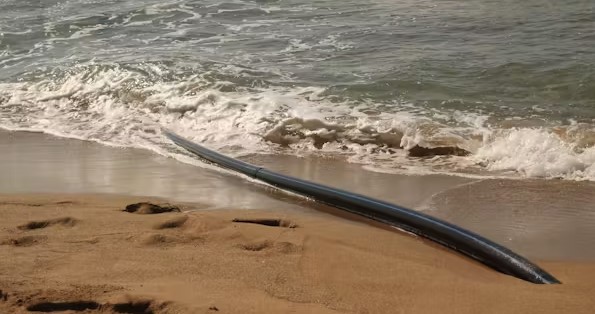Beneath the surface of our oceans lies a crucial network that powers the modern world – undersea cables. These thin cables, though often overlooked, carry 99% of global internet traffic, connecting continents and enabling communication on a scale that we often take for granted. However, these cables face constant threats, both from the natural world and from human activities, which require constant vigilance and intervention to keep them operational.
Undersea Cables: A Hidden Battlefield Against Nature’s Forces
The deep sea may appear calm and tranquil, but it is a harsh and unpredictable environment for undersea cables. One of the most significant natural threats to these cables comes in the form of turbidity currents, which are underwater landslides that can occur due to events like earthquakes. These currents, which can move at speeds of up to 80 mph, are capable of snapping cables with devastating force. One example of this was the 1929 Newfoundland earthquake, which caused a massive landslide that severed 12 transatlantic cables.
Modern cables are designed to withstand some of these natural threats, but the risk remains. Disasters such as volcanic eruptions can also pose serious threats to these cables. A notable event occurred in 2021, when the eruption of the Tonga volcano disrupted global communication by damaging undersea cables. Natural disasters like these can isolate nations for weeks, underscoring how vital these cables are for communication and commerce.
Climate change further exacerbates the situation. In regions like West Africa, floods can trigger sediment flows that endanger cables on the ocean floor. However, despite these challenges, the deep-sea environment remains largely unpredictable. Scientists, however, have used cable breaks as an opportunity to learn more about underwater landslides, earthquakes, and other phenomena, gaining valuable insights into the mysteries of the ocean.
Man-made Threats: Human Activities Disrupting the Network
While natural forces are a significant threat to undersea cables, human activities often pose an even greater danger. Fishing gear, including nets, anchors, and trawling equipment, accounts for 70-80% of all cable faults. As fishing vessels move into deeper waters, the risk of accidental damage increases. Small boats with limited crews are particularly hazardous, as they may unintentionally damage cables while fishing in areas where these cables are laid.
In addition to these accidental threats, intentional human interference also poses a serious risk. There have been cases where individuals have deliberately targeted undersea cables, often during politically sensitive times. For instance, recent events in the Baltic Sea suggest that attackers linked undersea cable damage to hybrid warfare tactics, damaging the cables to disrupt communication and create chaos. Such attacks can have far-reaching consequences, affecting global communication systems and highlighting the vulnerability of these critical infrastructures.
To mitigate the risk of accidental damage, experts are mapping the locations of undersea cables more accurately and educating the public, especially those involved in fishing and shipping industries. New technologies, like Automatic Identification Systems (AIS), are helping track ships in real-time, making it easier for them to avoid areas where cables are located. Despite these advancements, the risk of deliberate interference remains, and international cooperation is essential to protect this vital infrastructure.
Undersea Cables: Repairing the Damage – The Underwater Army in Action
When undersea cables are damaged, specialized repair ships quickly respond to restore communication. These ships use grapnels to retrieve cables from the seafloor, sometimes from depths over 1,500 meters, and technicians work to fix the breaks. In shallow waters, remotely operated vehicles (ROVs) help excavate the seabed and lay cables, while large plows bury them in deeper waters to protect them from future damage. These repairs require both skilled labor and advanced technology, highlighting the vital role undersea cables play in global connectivity.
Undersea cables face constant threats from natural forces like earthquakes, as well as human interference such as fishing accidents and intentional attacks. Despite these challenges, dedicated teams maintain and repair the cables, keeping the global communication systems running smoothly. The efforts of these teams are essential for a connected world, emphasizing the importance of the invisible network that enables the internet and vital communication systems.

